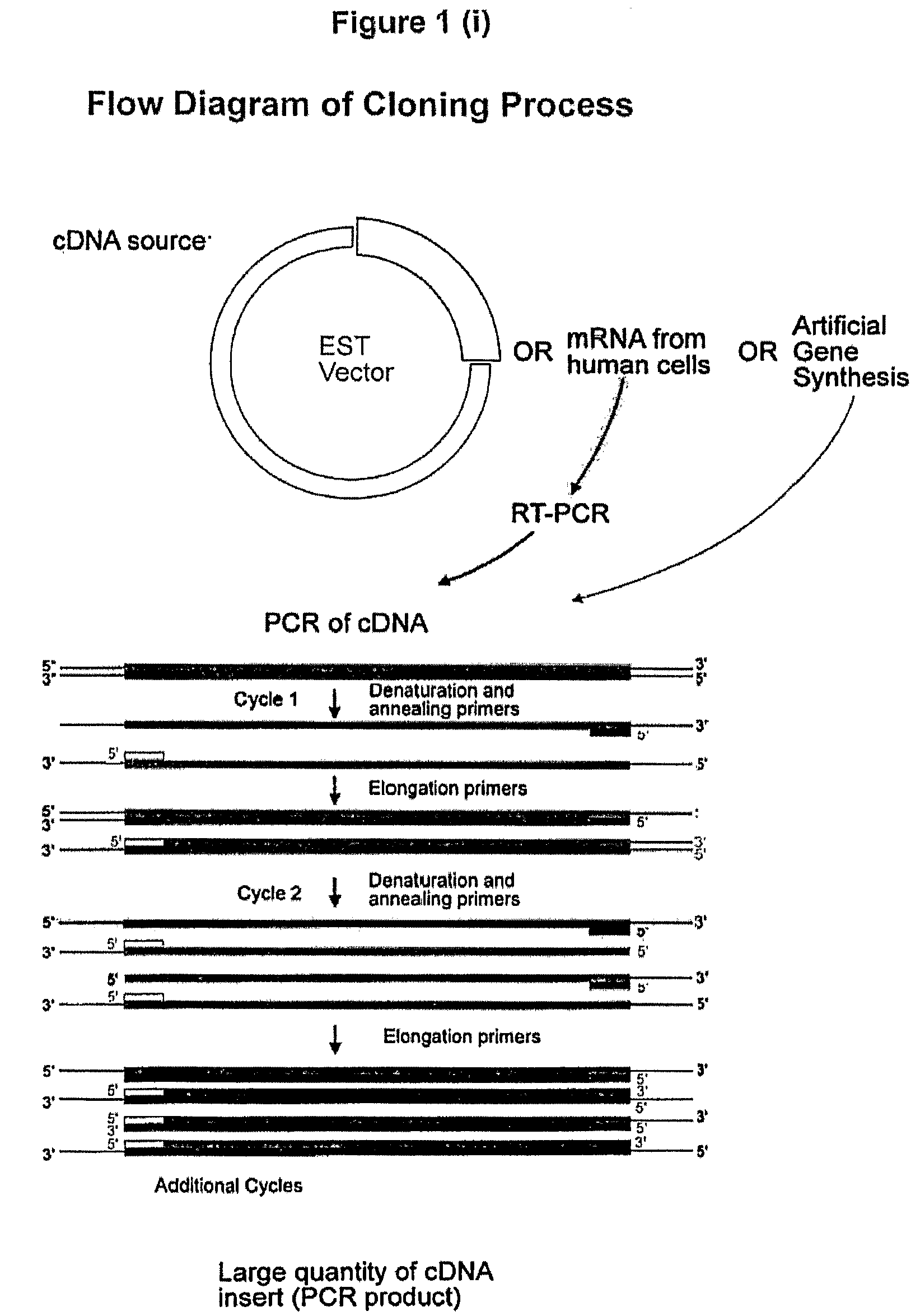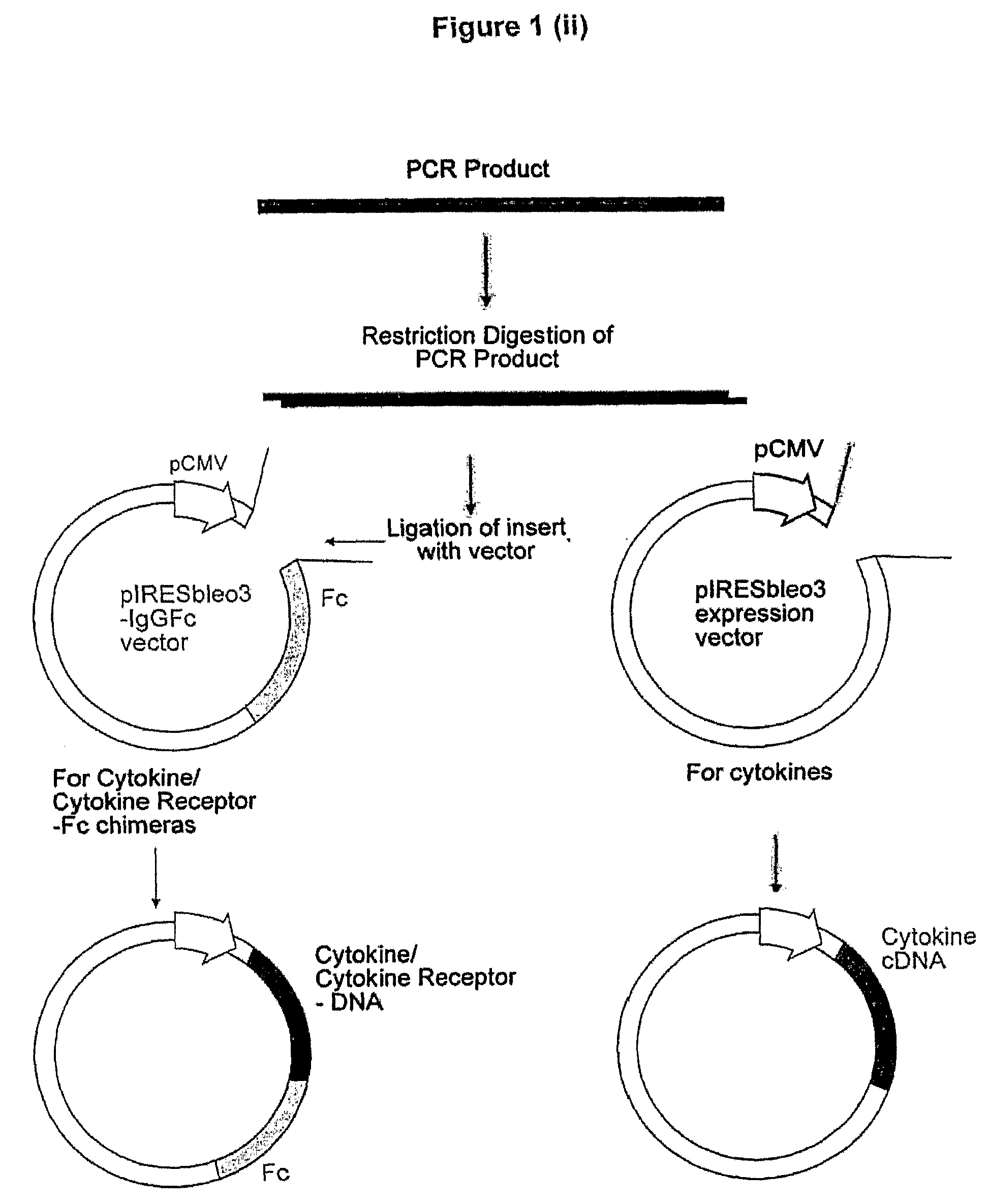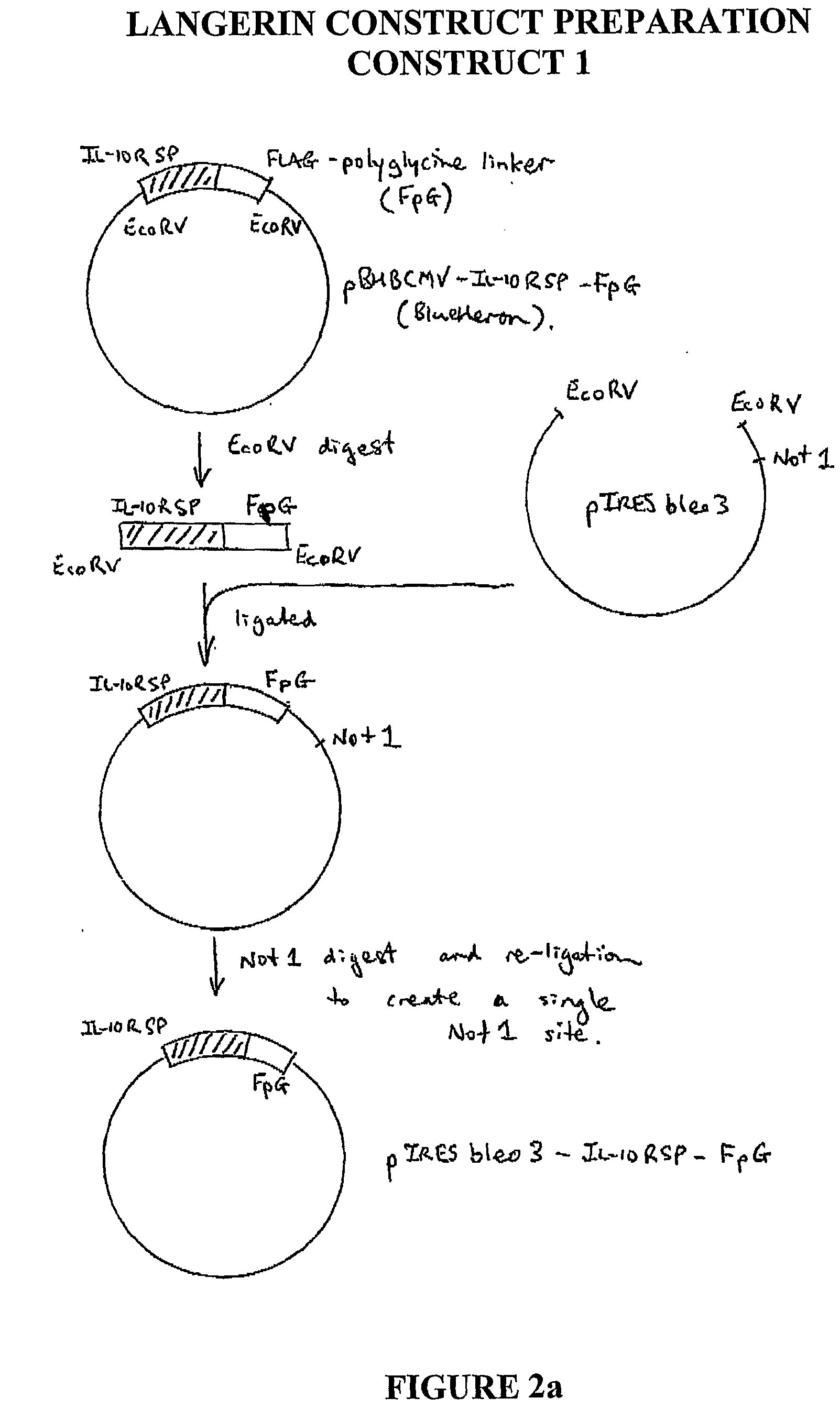Molecule and chimeric molecules thereof
a technology of molecule and chimeric molecule, applied in the field of isolated protein molecule, can solve the problems of unsuitable clinical applications, unsuitable for protein therapeutics, and inability to produce commercially available proteins
- Summary
- Abstract
- Description
- Claims
- Application Information
AI Technical Summary
Benefits of technology
Problems solved by technology
Method used
Image
Examples
example 1
Production of a Vector-Fc Construct
[0546](a) pIRESbleo3-Fc
[0547]The DNA sequence encoding the Fc domain of human IgG1 was amplified from EST cDNA library (Clone ID 6277773, Invitrogen) by Polymerase Chain Reaction (PCR), using forward primer (SEQ ID NO:21) and reverse primer (SEQ ID NO:22) incorporating restriction enzyme sites BamHI and BstX1 respectively. This amplicon was cloned into the corresponding enzyme sites of pIRESbleo3 (Cat. No. 6989-1, BD Biosciences) to produce the construct pIRESbleo3-Fc. Digestion of pIRESbleo3-Fc with BamHI and BstX1 released an expected size insert of 780 bp as determined by gel electrophoresis.
(b) Production of a DNA Construct Expressing a Protein or a Protein-Fc
[0548]The DNA sequence encoding the protein or the extra cellular domain thereof was amplified from an EST cDNA library by PCR, using forward primer and reverse primers that incorporated restriction enzyme sites according to Table 8. After amplification, the amplicon was digested with suit...
example 2
(a) Production and Purification of Amphiregulin of the Present Invention
(i) Production of Amphiregulin of the Present Invention
[0564]At day 0, five 500 cm2 tissue culture dishes (Corning) were seeded with 3×107 cells of transformed embryonal human kidney cell line, for example HEK 293, HEK 293 c18, HEK 293T, 293 CEN4, HEK 293F, HEK 293FT, HEK 293E, AD-293 (Stratagene), or 293A (Invitrogen). Cells were seeded in 90 ml per plate of Dulbecco's Modified Eagle's Medium / Ham's Nutrient Mixture F12 (DMEM / F12) (JRH Biosciences), the medium being supplemented with 10% (v / v) donor calf serum (DCS, JRH Biosciences) 4 mM L-glutamine (Amresco) and 1% (v / v) Penicillin-Streptomycin (Penicillin G 5000 U / ml, Streptomycin Sulphate 5000 μg / ml) (JRH Biosciences). The plates are incubated at 37° C. and 5% CO2 overnight.
[0565]At day 1, transfection was performed using calcium phosphate. Before transfection, the medium in each plate was replaced with 120 ml of fresh DMEM / F 12 supplemented with 10% (v / v) DC...
example 3
(a) Characterization of Amphiregulin of the Present Invention
(i) Two-Dimensional Polyacrylamide Electrophoresis
[0624]The collected sample from Example 2(a) was buffer exchanged by dialysis or desalting column (Pharmacia HR 10 / 10 Fast Desalting Column) into repurified (18 MOhm) water and dried using a SpeedVac concentrator. The sample was then re-dissolved into 240 microliters MSD buffer (5M urea, 2M thiourea, 65 mM DTT, 2% (w / v) CHAPS, 2% (w / v) sulfobetaine 3-10, 0.2% (v / v) carrier ampholytes, 40 mM Tris, 0.002% (w / v) bromophenol blue, water) and centrifuged at 15000 g for 8 minutes.
[0625]Isoelectric focusing (IEF) was performed using either precast 11 cm or precast 17 cm gel pH 3-10 immobolised pH gradient IEF strips (BioRad). The IEF strips were re-hydrated in the sample in a sealed tube at room temperature for at least 6 hours. The IEF strips were placed into the focusing chamber and covered with paraffin oil. IEF was carried out at 100 V for 1 hour, 200V for 1 hour, 600V for 2 h...
PUM
 Login to View More
Login to View More Abstract
Description
Claims
Application Information
 Login to View More
Login to View More - R&D
- Intellectual Property
- Life Sciences
- Materials
- Tech Scout
- Unparalleled Data Quality
- Higher Quality Content
- 60% Fewer Hallucinations
Browse by: Latest US Patents, China's latest patents, Technical Efficacy Thesaurus, Application Domain, Technology Topic, Popular Technical Reports.
© 2025 PatSnap. All rights reserved.Legal|Privacy policy|Modern Slavery Act Transparency Statement|Sitemap|About US| Contact US: help@patsnap.com



